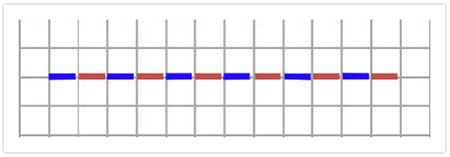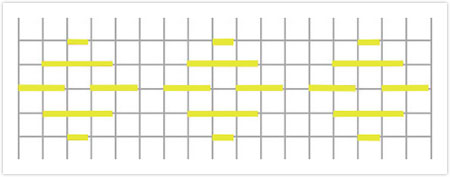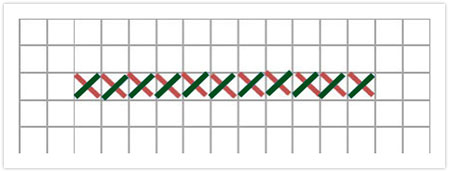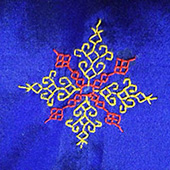Design Resource
Kasuti Embroidery - Karnataka
Needle Handwork
by
In olden times, women spare their leisure time for weaving and embroidery skills. Karnataka is famous for the silk industry. The discarded silk threads were used for Kasuti embroidery. The uniqueness of this embroidery is that the patterns are stitched without knots at starting or ending points. The reason behind this is that a pattern should look alike on both sides of the cloth. Different types of stitches are used to obtain the desired pattern. There are four types of stitches namely, Gavanti, Murgi, Negi and Menthi.

Gavanti: It is the most common stitch. It is the double running stitch used for making vertical, horizontal and diagonal lines. The patterns are mostly geometrical. The designs appear to be identical on both sides of the fabric.

Murgi: It is a zigzag stitch and it appears like the steps of a ladder. The distance between the stitches remains the same as the stitches are of uniform size. The work in Murgi stitches is neat and tidy; hence the design appears the same on the right and wrong sides of the material.

Negi: It is an ordinary running stitch. Basically, it goes from right to left. This stitch is used for larger designs. The design created resembles woven patterns. It is worked in long and short straight lines hence the wrong and right sides of the design are not appearing identical.

Menthi: It is a cross stitch resembling fenugreek seeds. It had generally a heavy appearance so it is used for filling purposes. This stitch is not much used as a large amount of thread is required. It is commonly used to cover up the background areas of the designs.
















